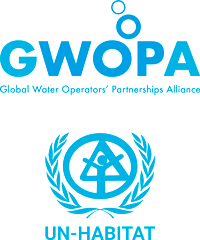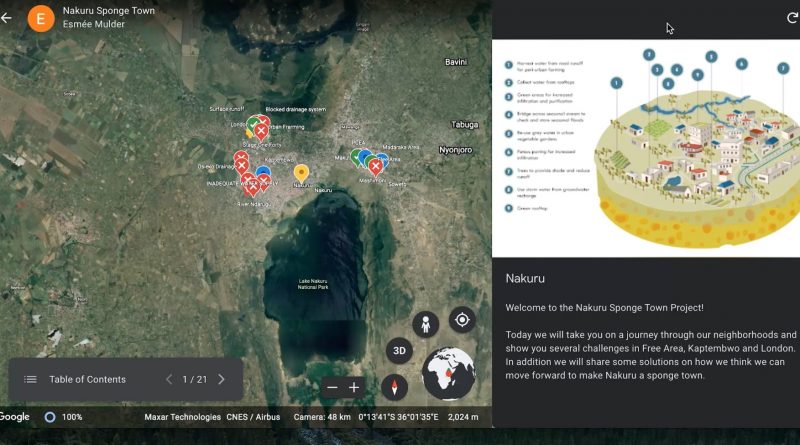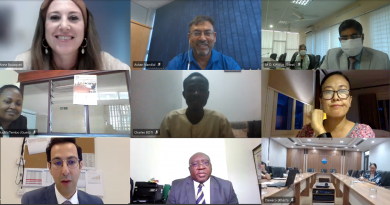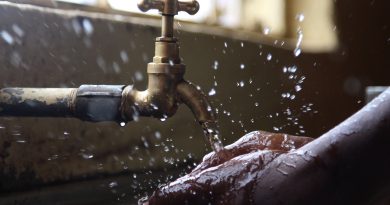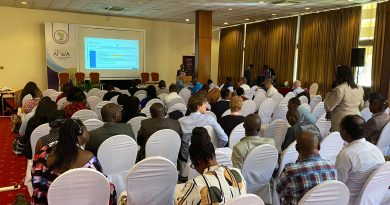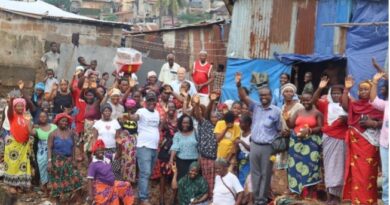Residents from Low-Income Areas in Nakuru Contribute to Urban Planning and ‘Sponge Town’ Goals
A project between the WaterWorX WOP VEI-NAWASSCO*, MetaMeta Research, and County Government of Nakuru show the potential of the collaborative work in the water sector, bringing service providers, WOPs, government, communities and private sector together
Nakuru is a town 150 km northwest of Nairobi, lying on the north shore of famous Lake Nakuru. Low-income areas of the town particularly experience flooding and water shortage, and the consequences of weather and climate-related extremes. Residents of Kaptembwo, Free Area, and London low-income neighborhoods, who experience and understand what it is like to live under these conditions, walked their streets to map the problems and come up with potential solutions.
This approach was designed and implemented by the Nakuru Resilient Sponge City Project, a partnership between the WaterWorX WOP VEI-NAWASSCO*, MetaMeta Research, County Government of Nakuru, and the local residents within the Nakuru town, with the aim to improve access to and availability of clean and safe water, as well as resilience in water resource protection and water supply.
* The WaterWorX WOP is between the Dutch utility VEI, and all three Water Utilities (NAWASSCO, NARUWASCO and NAIVAWASCO) in Nakuru County. This particular project was carried out in the jurisdiction of NAWASSCO, and thus, NARUWASCO and NAIVAWASCO were not part of the Sponge Town project.
In early 2021, project partners and community groups from different backgrounds, age groups, gender and ability, met to discuss challenges related to climate, water availability, quality and supply in those areas. The meetings also addressed the ‘sponge city’ or town model, concept at the core of the project to promote natural hydrological cycle, and ecosystem and environment protection applying the 3Rs: Recharge, Retention, Reuse.
After the discussions, the residents went to the streets in small groups with their phones to provide essential base information on the challenges and potential solutions to flooding and water shortage. Using an app called KoBo Toolbox, the different groups took pictures, videos and wrote descriptions of problems/solutions linked to geolocation points. These information points were then transferred to Google Earth to result into a dynamic and visual map which allows the user to follow the work of the residents, zooming in and out of areas with major issues, yet with great opportunities for improvements:
Project partners held bi-weekly virtual meetings to gather updates on the activities and reports from the field. These aimed at comparing all information to the work plan, performance, and progress of the project.
One of the objectives of the project is to create a synergy between the technical issues and the community. While this was partly achieved with the involvement of the residents in designing and implementing some activities of the project, the Dutch utility partner of the WaterWorX WOP, VEI, contributed with the provision of expertise and capacity building on technical and financial operation of urban water infrastructure to county water service providers (WSPs). VEI also ensured long-lasting working relations with the service providers and town officials, strengthening the collaboration and city-to-city learning on nature-based solutions between Nakuru and Amsterdam.
The environment and the residents will benefit from the project and the WOP activities either directly or indirectly. The interventions are envisioned to improve supply, quality of and access to water; build the capacity of local partner water providers; improve sanitation services; contribute to the restoration of degraded/abandoned landscapes and water sources; increase urban community awareness on environmental issues such as waste management; increase the utilization of the harvested storm water; and reduce flooding; among others.
With the results achieved, the pilot project wants to show the potential of the collaborative work, bringing service providers, WOPs, government, communities and private sector together in participatory decision making, planning and implementation, while stressing the need to mobilize (financial) resources.
